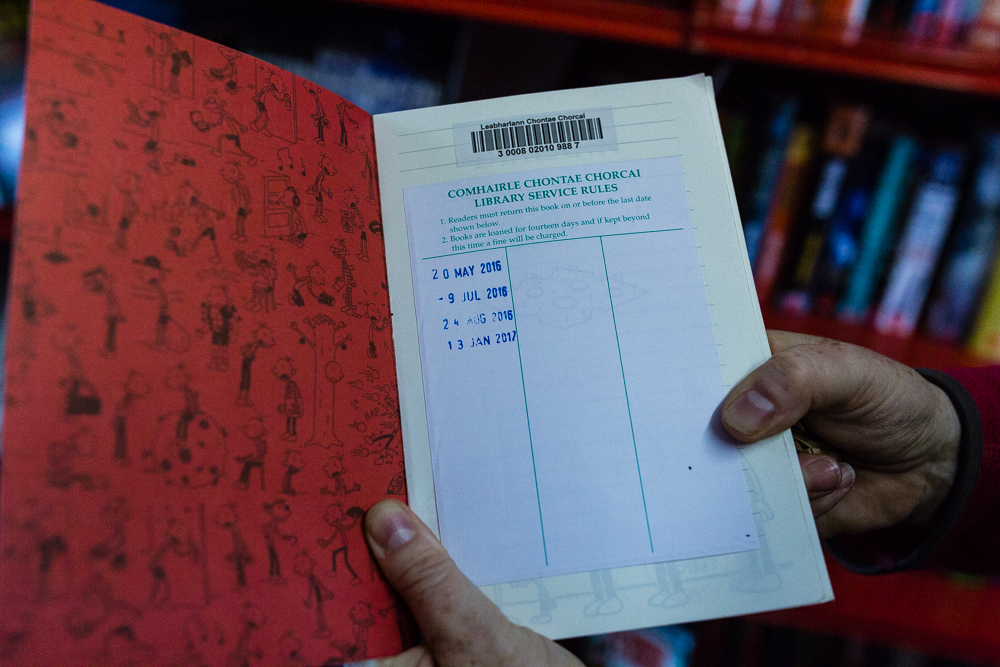
Gaeltacht
When I first came to Ireland in 2004, I knew very little about the Irish language. I knew that it exists and that I don’t have to worry about it as everyone speaks English.
In the first few weeks, while helping my friends to find schools for their children, I came across a local Gaelscoil – an Irish-medium school. Over 50,000 students attend Gaelscoileanna (plural of Gaelscoil) in Ireland. Yet, the only way for me to hear the Irish language was to turn a radio to RTÉ RnG – the national radio station broadcasting in Irish.
Sometime later, when travelling through the south coast, I discovered a place in County Waterford called An Rinn. It was my introduction to the Gaeltacht - the areas where the Irish language supposed to be a community language.
I first thought about photographing the Gaeltacht in 2013. I've sent few emails, I've made few contacts, but I haven’t progressed with it. However, the idea has never disappeared from my head. I've read many articles about the Irish language, the reasons for its decline, and about the efforts to keep it alive. I wanted to photograph it. I just needed to figure-out one thing. How does one photograph the language?
At the end of May 2017, I bought a second-hand copy of the Next#02 - a publication presenting the essays made by the participants of the Joop Swart Masterclass. One of the essays got my special attention. Maja Daniels documented a small community in rural Sweden that speaks Älvdalska, an ancient language once spoken by the Vikings. Looking at her work, I’ve realized that I don’t need a plan, contacts, or appointments. I just needed to grab the camera and go.
The Gaeltacht covers large rural areas of counties Galway, Donegal, Kerry, Mayo, and parts of counties Cork, Waterford and Meath. In the last few months, I made many trips to Gaeltacht regions. I met interesting people, I talked with the locals and the tourists, and I photographed daily life, visual nuances, and amazing landscapes.
For many years, the remoteness of the west was one of the reasons that helped Irish language to survive. Nowadays, Gaeltacht regions are the major touristic attraction. Most of them are located along the scenic coastal route – The Wild Atlantic Way. The 2016 Census results show an 11 per cent drop in daily speakers outside the education system in the Gaeltacht within the past five years.
When working on the story, I heard people speaking Irish only twice. Another two people told me that Irish was their first language.

An old photograph of a port of An Rinn, some basic Irish words and phrases, and Ogham - an Early Medieval alphabet used to write the early Irish language, are seen on a corridor in Coláiste na Rinne, An Rinn, Contae Phort Láirge.
Coláiste na Rinne was established in 1905 and officially recognised in 1907 as an Irish language summer school. Today Coláiste na Rinne offers a wide range of classes and cultural experiences to learners and visitors of all ages, from all over the world.

Padraig at work. He said that Irish is his first language that he speaks everyday with his friends and family.
Conamara, Contae na Gaillimhe.

Kevin herding sheep with his sons. Kevin understands some basic Irish but English is his first language.
An Mhuirthead, Contae Mhaigh Eo.

The check-out card in a book written in the Irish language. Cape Clear's library.
Cape Clear Island has a population of approx. 120 people.
Cléire, Contae Chorcaí.

Joan is a librarian on Cape Clear Island. She organizes a reading competition for local children. A child can get some extra points in the competition for reading a book written in Irish.

Tourists from Co. Laois and Co. Tipperary reading newspapers during their holiday stay in Spiddal. They don't speak Irish.
There is no Irish-language newspaper being published in Ireland, but most newspapers run Irish-language columns.
An Spidéal, Contae na Gaillimhe.

Club Cléire is owned and run by the local community co-opeartive, Comharchumann Chléire Teo. It was one of the only two places where I heard people speaking Irish during my trips.
Cléire, Contae Chorcaí.

Local children attending a water safety course in An Mhuirthead, Contae Mhaigh Eo. They all speak English at their homes.

Kruger's Bar in Dun Chaoín was one of the only two places where I heard people speaking Irish during my trips.
Dun Chaoín, Contae Chiarraí.








